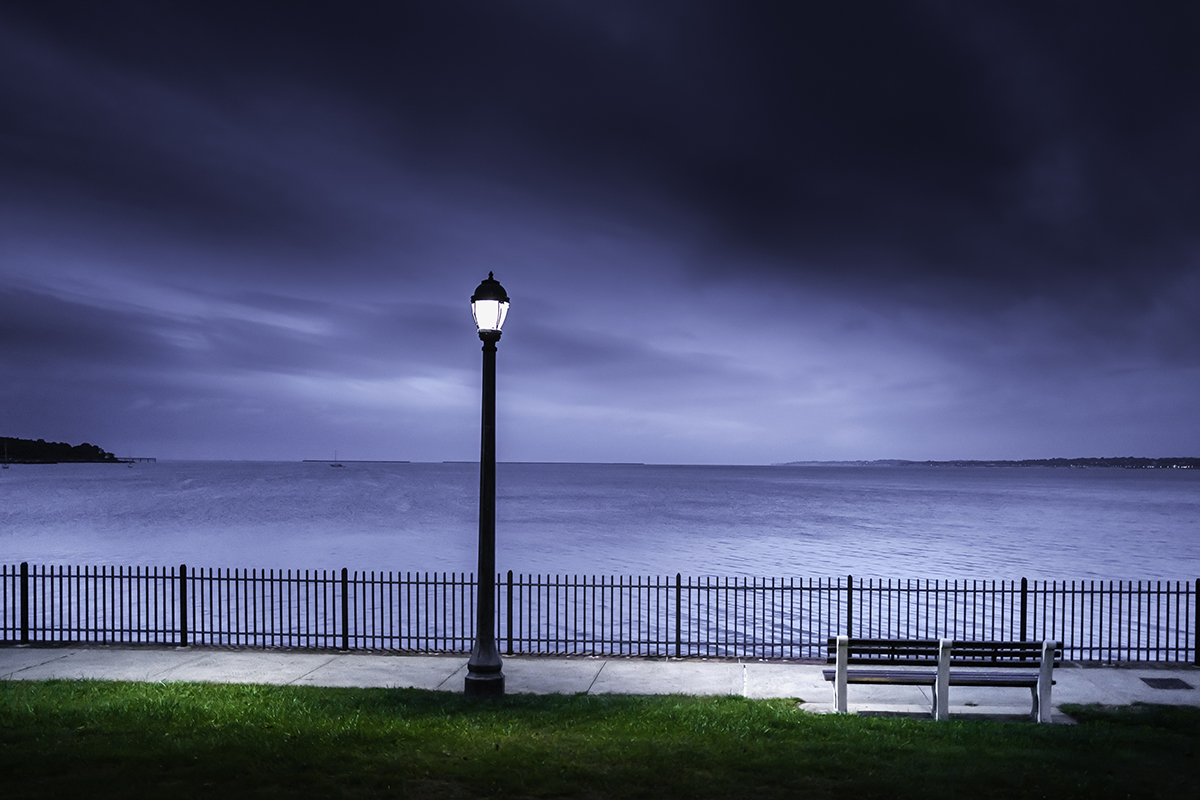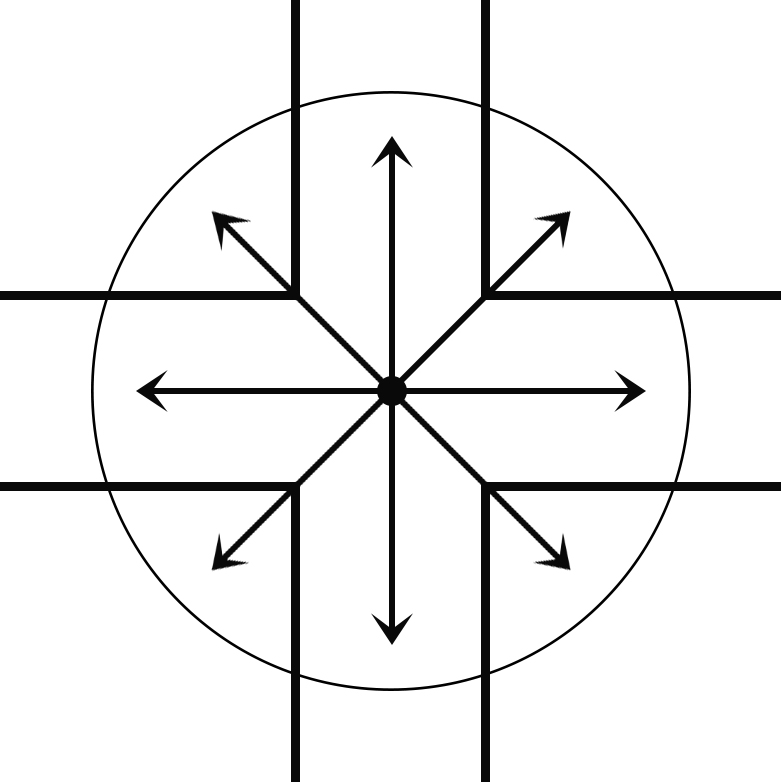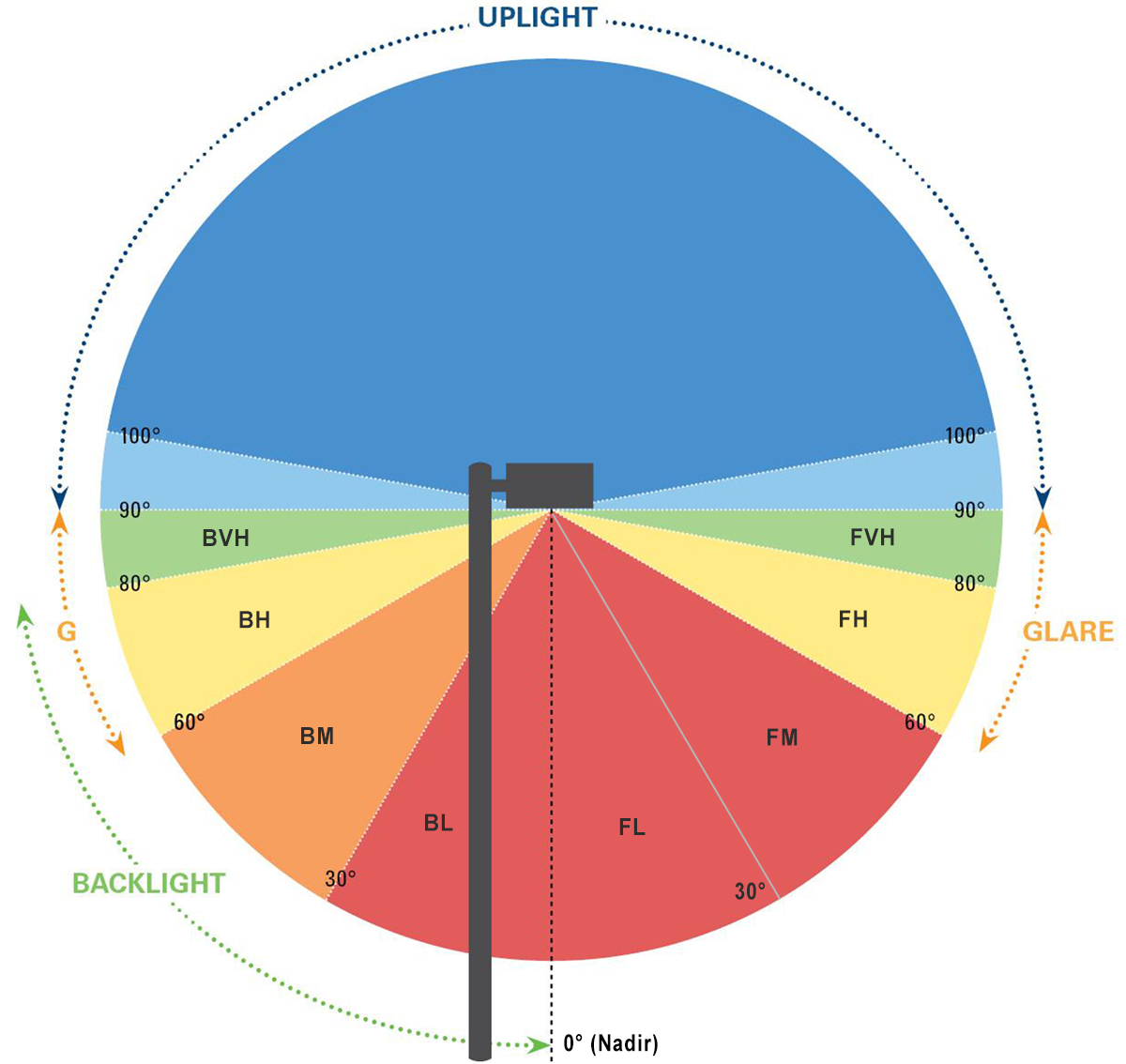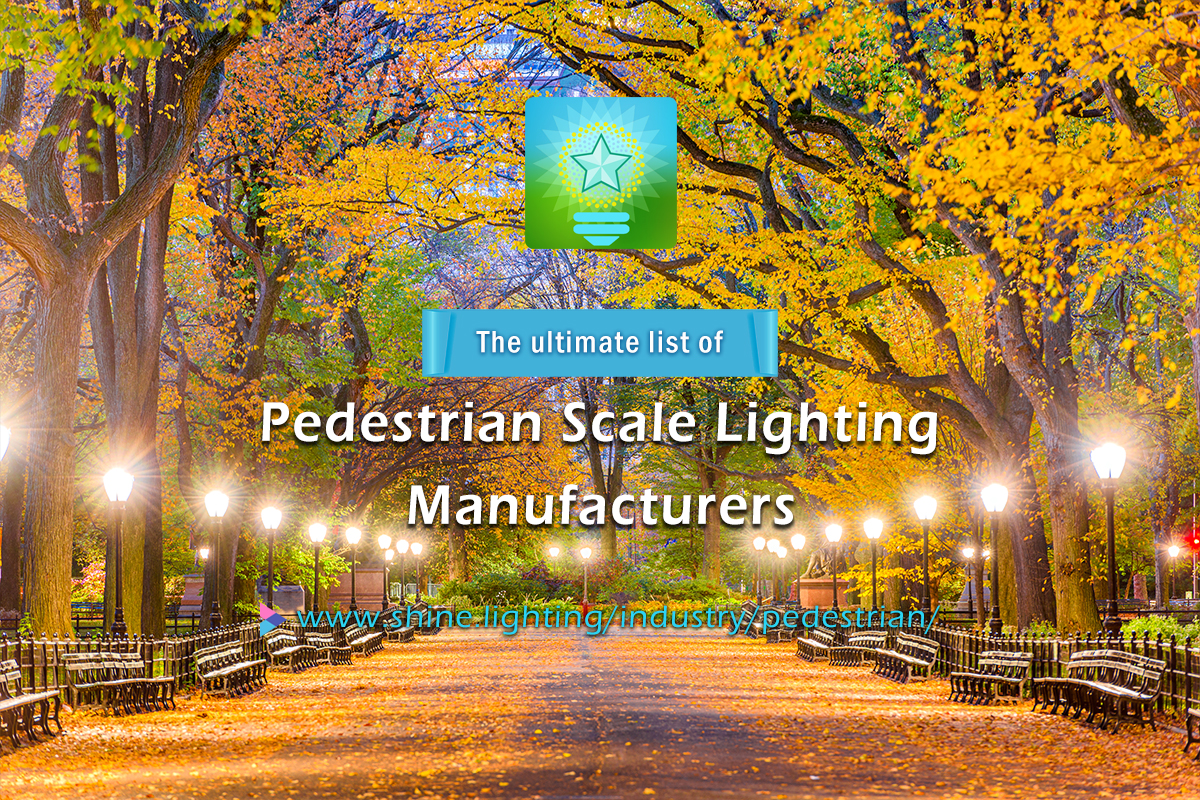Table of Contents Hide

What Is Pedestrian-scale Lighting
With luminaire mounting heights ranging from 3 to 9 meters, pedestrian-scale street lighting provides quality visual information that can allow drivers and pedestrians to safely and comfortably navigate at night. Post top lights are the prevailing type of outdoor light fixtures that provide human-scale illumination for pedestrian areas. These outdoor light fixtures are not intended to simply provide uniform and controlled illumination for enhanced visibility and security, they're also the crowning feature of any outdoor landscape or streetscape. Post top lights are sometimes referred to as decorative fixtures that contribute to visual appeal and aesthetic success of the landscape or streetscape.Form and Function in Harmony
Today's pedestrian-scale street lights combine stunning design features and advanced lighting technology to deliver a harmony of form and function. The wide variety of styles and designs allow the light fixtures to complement the architectural and environmental design scheme of residential streets, pedestrian precincts, boulevards, footpaths, parks, or campuses. Incorporate historically styled fixtures to evoke a sense of timeless elegance, or radiate contemporary beauty through fixtures that exude minimalist sophistication and boast sleek contours. Post top lights are built around LED technology which opens up entirely new possibilities with respect to the economic payback, life cycle, luminaire design and optical performance.Structure and Design
Pedestrian-scale lighting fixtures comprise a base, a pole, and a luminaire or multiple luminaires. The base offers a clean and strong joint between the pole and foundation. A typical clamshell design facilitates easy access to wiring and inner base mounting hardware. Poles and bases can be manufactured from aluminum, steel, concrete, wood or fiberglass. Aluminum is the mostly used material for its advantages of allowing for complex geometries and features, and economical manufacturing for large production volumes using either the die casting or extrusion process. The base is oftentimes constructed of heavy gauge cast aluminum and may be designed with decorative elements that enhance surrounding architecture or help establish a theme. Base castings are substantial enough size to project strength and substance to site design while accommodating driver/ballast assemblies for easy servicing. Straight and smooth poles are usually made from extrusion aluminum or steel poles. On many occasions poles are fluted and/or tapered for a sculptural look. Tapered and fluted poles are made of heavy wall die cast aluminum for strength and durability. Straight and fluted poles are typically extruded from heavy wall aluminum. The pole assembly is attached to a concrete foundation using anchor bolts.The luminaire is the essential design element and functional component that let you add style and shine to a diverse range of exterior spaces. Aesthetics are a top priority in the design of post top luminaires. In combination with the design continuity of poles and bases, Victorian, Art Deco, Colonial, Mediterranean, modern and contemporary styles are fused into the designs of post top lights to create a focal point and inspire conversations.
The classic retro feel is best represented by acorn and lantern style luminaires. Acorns, which were modeled after the historical gas lanterns, have evolved into a variety of iterations and perform street and area lighting functions very well. The charm of eighteenth century street lighting is also transformed into lantern style luminaires. These cast frame luminaires have distinctive 4-, 6-, or 8-sided windows allowing lighting to be cast in the most important directions and offer a faithful historic look with decorative chimneys, finial options, window panel designs and roof configurations. The acorn globes and lantern window panels are made from either polymer materials like acrylic and polycarbonate or glass and are available with textured, prismatic and clear smooth surfaces.
Acorns and lanterns are held securely to pole top tenons by cast aluminum fitters which are also designed as aesthetical transition pieces between luminaire's globe or lantern and the pole or arm on which it is mounted. The fitters sometimes have a utility function and serve as a housing for driver and control components, terminal blocks, photocontrols, etc.
The advent of LED technology revamped the design concept towards the expression of the fixture. The compact, solid state light source allows fixture designers to create extra wow factors with a dramatic blend of art and engineering. The mix of LED technology with iconic design themes is sure to bring an upscale charm and contemporary aesthetic to any space. The emphasis of contemporary style post top luminaires rest with the minimalistic aesthetics that exude through clean lines and striking geometric forms.
Lighting Technology
Pedestrian-scale lighting fixtures utilize either LED light modules or LED light bulbs to deliver the energy efficiency and life cycle benefits of LED technology to outdoor applications. LED light bulbs with medium or mogul base bases are used to retrofit HPS systems or to provide a plug-and-play solution for low-end or traditional style light fixtures. LED light modules are integrated into luminaires and come with a design adapted to the structures of luminaires. While LED bulbs allow for convenient replacement, integrated LED modules typically come with better thermal management and light distribution, which translates to longer operation life and better lighting performance. In high power applications, the use of high wattage LED bulbs is of a particular concern because these bulbs are often installed in an enclosed environment that is deficient in natural air flows for convective heat dissipation. In integrated LED luminaires, the LED modules are usually thermally interfaced with the cast aluminum housing which dissipates thermal energy into the surrounding ambient air.Reliability and lumen maintenance are two critical factors to be considered when evaluating a post top luminaire. In addition to maintaining a low junction temperature to prevent damages from thermal degradation, the outdoor LED luminaire must be protected from moisture, corrosive gases or chemicals penetrating through the silicon encapsulation of the LED packages. The presence of moisture, in particular, can reduce interfacial adhesion strength and lead to the delamination in polymer plastic packages. Therefore a high ingress protection (IP) rating (e.g. IP66) is required to ensure the enclosure integrity of the light engine. LED luminaires are typically operated by a constant current LED driver. The LEDs should be driven by an optimal forward drive current because high current density operation can cause irreversible damages such as permanent lumen depreciation and electromigration to the LEDs. For areas prone to surges, additional protection against excessive high surge voltages is required to protect the LEDs from electrical overstress (EOS) and safeguard sensitive circuits and components in LED drivers. The LED driver or the electrical compartment also requires a high watertight integrity to keep dust, dirt and water from entering the circuits.
Lighting Control
In addition to manual on/off and dimming controls on connected loads, various lighting control mechanisms can be implemented on post light fixtures to make a single environment flexible enough to accommodate the visual needs and energy codes requirements. Time scheduling with time clocks, daylight harvesting with photocontrols, and occupancy sensing with motion sensors are some of the commonly used lighting control strategies that enable automated light management at the basic level. Centrally managed lighting control systems enable remote control and monitoring of individual luminaires or a group of luminaires. Adding intelligence and communications capabilities to post top lights create systems that have the ability to react to changing environments. Incorporating intelligent post top lights into an IP network infrastructure presents opportunities to transform these ubiquitously distributed light fixtures into network nodes of Internet of Things (IoT) networks.Optical Control
Optical control for pedestrian-scale lighting systems must meet today's stringent criteria for outdoor lighting applications. Optical systems of post top luminaires are designed to provide the desired light distribution while maximizing light extraction, uniformity and luminaire spacing, and also maintaining a consistent exterior form. Pedestrian-scale lighting fixtures are mostly available in type III, IV and V light distributions.Type III optics are designed for applications where luminaires are mounted at or near the side of medium width roadways or areas with widths of 1.75 - 2.75 times the mounting height.

Type IV optics are designed to maximize the amount of light going forward from the fixture which is installed around the perimeters of parks, squares, parking lots where there is no desire for wasted light behind the pole.

Type V optics produce a wide symmetrical pattern of light for large, open areas.

The effect of outdoor lighting systems on the environment are under increasing scrutiny. As such, precise cutoff of light is required in some areas to eliminate urban sky glow (light pollution), light trespass, and glare. Vertical light control was previously implemented according to four classifications of cutoff compliances: full cutoff (no light is present at or above a horizontal plane), cutoff (a minimum amount of light is directed at a horizontal plane), semi-cutoff (up to 5% of the light is emitted upward at or above 90 degrees and up to 20% of the light is emitted at or above 80 degrees), and non-cutoff (light is emitted in all directions). This classification system has been replaced by the IES BUG (Backlight-Uplight-Glare) rating system which establishes zonal lumen classifications for luminaires. Backlight, which is the light leaving the post top luminaire in the opposite direction to the main aiming angle of the light, is evaluated for high (60 - 80 degrees), medium ( 30 - 60 degrees) and low (0 - 30 degrees). Uplight considers the total light propagating from the luminaire in a near horizontal or above-horizontal direction. It's evaluated for high (skyglow: 100 - 180 degrees) and low (90 - 100 degrees). Glare is evaluated for forward light and backlight very high (80 - 90 degrees), forward light medium (60 - 80 degrees), and backlight medium (60 - 80 degrees).

Optical control for post top luminaires can be accomplished by reflection, refraction, diffusion, or transmission through lenses. Acorns and lanterns typically employ reflectors, refractors, diffusers and louvers to distribute light out of the luminaire, control glare and improve visual comfort. Contemporary style post top lights may use TIR (total internal reflection) lenses with the goal of creating a precisely controlled beam of light from the LEDs.
Illuminance
Pedestrian areas are classified according the traffic volumes. Commercial areas in urban environments usually have a high nighttime traffic with over 100 pedestrians per hour. These areas are known as high pedestrian activity areas. Downtown office areas, blocks with community facilities, and streets with transit lines which have less numbers of pedestrians (1 to 100 pedestrians per hour) are medium pedestrian activity areas. There are very low volumes of nighttime pedestrian traffic (10 or fewer pedestrians per hour) in suburban streets with low density residential developments. These areas are known as low pedestrian activity areas.High pedestrian activity areas require an average horizontal pavement illuminance of 20 lux for areas with mixed vehicle and pedestrian traffic or 10 lux for areas with pedestrian only traffic. A minimum vertical illuminance (at 1.5 m above pavement) of 10 lux or 5 lux in corresponding areas should be maintained in these areas. The average horizontal pavement illuminance and minimum vertical illuminance for medium pedestrian activity areas are 5 lux and 2 lux, respectively. For low pedestrian activity areas, an average horizontal pavement illuminance of 2 -4 lux and a minimum vertical illuminance of 0.6 - 1 lux are recommended.
Scaling and Aesthetics
Pedestrian-scale lighting perform an essential lighting function but the decorative nature of these fixtures needs to be appreciated during the day as well. The aesthetics of street and area lighting is most heavily influenced by the design and style of fixtures as well as the ability of fixtures to match the scale of surrounding buildings. Wherever possible, pole height and pole spacing should be designed and specified to match or complement the urban design requirements. Scaling is about balance, esthetics and perception received by the pedestrian's visual system. The use of fewer poles reduces visual clutter. The luminaire mounting height can visually impact scale. Luminaire mounting heights between 3 - 6 meters go well with most post top lighting installations: urban sidewalks, residential neighborhoods, campuses, boulevards, bikeways and other intermediate areas. Urban boulevards, car parks, town centers, public squares, multiple-lane streets, and other large-scale areas where an expansive light distribution is essential may consider higher luminaire mounting heights (6 to 9 meters). Beyond the 6-meter luminaire mounting heights, however, decorative light fixtures lose their aesthetic value.Dimensional balance between luminaires and poles and between the cross-sectional sizes and heights of poles is equally important in scaling street and area lighting. Post top luminaires which drive the scale of everything else in the fixture assembly come in different sizes, giving opportunities for carrying the design theme throughout a project. Sternberg Lighting, a renowned designer and manufacturer of post light fixtures, suggests that poles with diameters or square dimensions of 4" match up with pole heights between 10' and 13', a 5" round or square pole should go with 14'-16' heights, and poles with a 7" diameter or square dimension should be used on poles that are 17' and taller. The base heights of traditional style poles should be no less than 10% of the total pole height, and the width and volume of the base should be similar to that of the luminaire.
Finish Treatment
An outdoor light fixture that improperly stands out from its surroundings will create visual distraction and compromise the artistry of the application. At the same time, an outdoor light fixture that is unable to survive extreme temperature changes and atmospheric corrosions will eventually lose its visual appeal and fail to deliver aesthetic value of decorative lighting. That's why the finish treatment is just as important as other design elements of a light fixture. To maintain its timeless appeal, the aluminum housing, pole, base, fitter, final and other air-exposed aluminum parts of a post top light fixture are often finished with a polyester powdercoat. Prior to coating, these parts are chemically cleaned and pretreated in a multi-stage washing system to create a powerful bond between metal and paint. A fade and abrasion resistant triglycidal isocyanurate (TGIC) polyester powdercoat is then electrostatically applied and thermally cured.











































